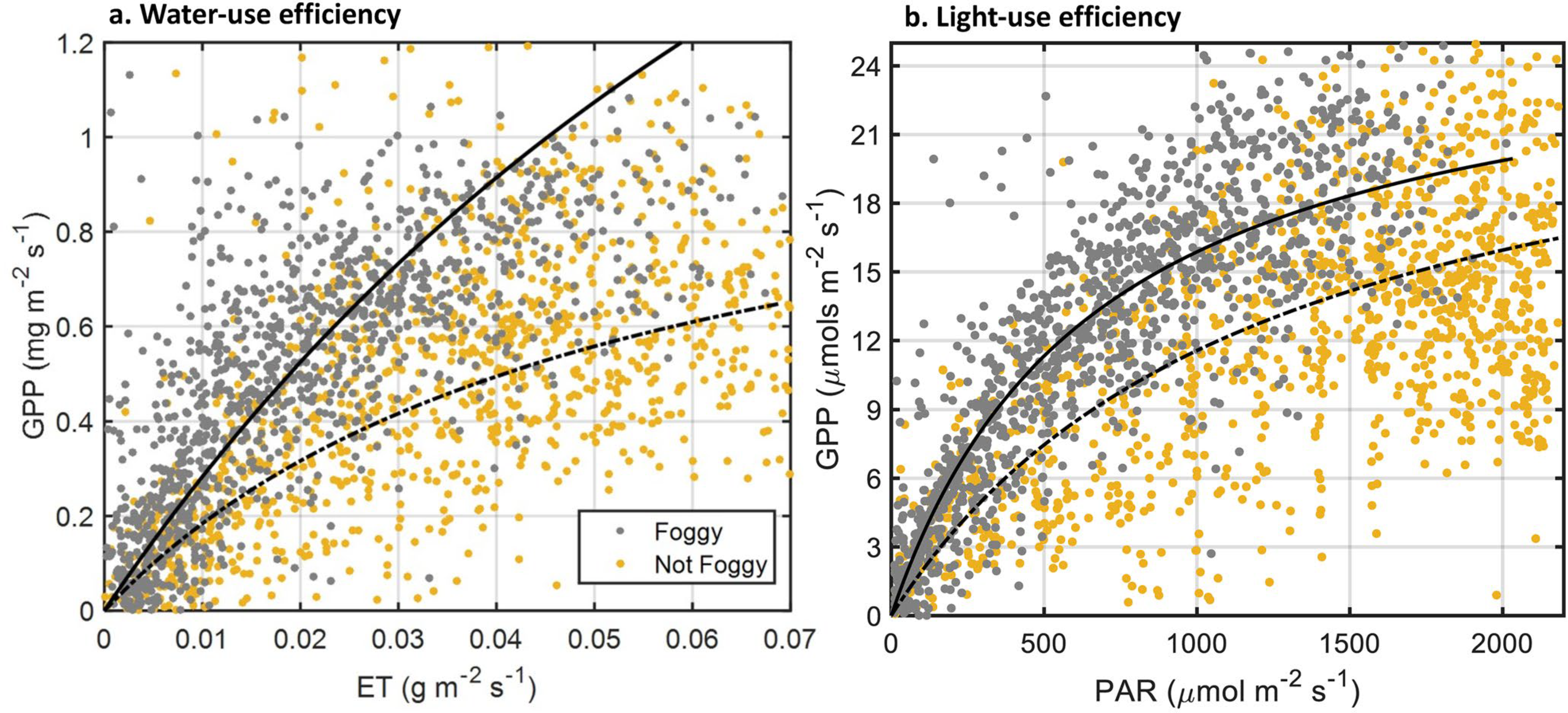Water and Light-Use Efficiency Are Enhanced Under Summer Coastal Fog in a California Agricultural System

Baguskas, S. A., Oliphant, A. J., Clemesha, R. E. S., & Loik, M. E. (2021). Water and light-use efficiency are enhanced under summer coastal fog in a California agricultural system. Journal of Geophysical Research: Biogeosciences, 126(5). https://doi.org/10.1029/2020JG006193
In coastal California, the peak growing season of economically important crops is concurrent with fog events, which buffer drought stress during the dry season. Coastal fog patterns are changing, so we quantified its effects on the energy, water, and carbon fluxes of a strawberry farm located in the fog-belt of the Salinas Valley, California. We used Geostationary Operational Environmental Satellite (GOES) total albedo to detect and quantify large scale patterns of coastal fog. We used eddy covariance (EC) to quantify actual evapotranspiration and gross primary productivity (GPP) at the field scale (approximately 0.5–3 hectares) from June to September 2016. We measured canopy-scale (approximately 0.6 m2) strawberry physiology on foggy and non-foggy days within the measurement footprint of the EC tower. Downwelling longwave radiation (L↓), observed by a surface-mounted pyrgeometer, was consistently higher on foggy compared to clear-sky days (regardless of fog-drip), indicating that emission of longwave radiation was derived almost entirely from the cloud base. L↓ and total GOES albedo were positively and strongly correlated (R2 = 0.68, P < 0.01). For both field- and canopy-scales, water-use and light-use efficiency increased by as much as 50% and 70%, respectively, during foggy compared to non-foggy conditions. The initial slope of the curvilinear relationship fit between GPP and photosynthetically active radiation was twice as steep during foggy (α = 0.0395) than non-foggy (α = 0.0210) conditions, suggesting that the scattering of light during fog events enhances photosynthetic output of whole-plants. Our results suggest that irrigation for these fields could be rescheduled during foggy periods without sacrificing plant productivity.